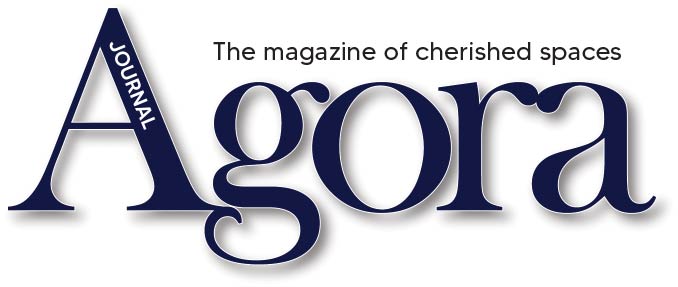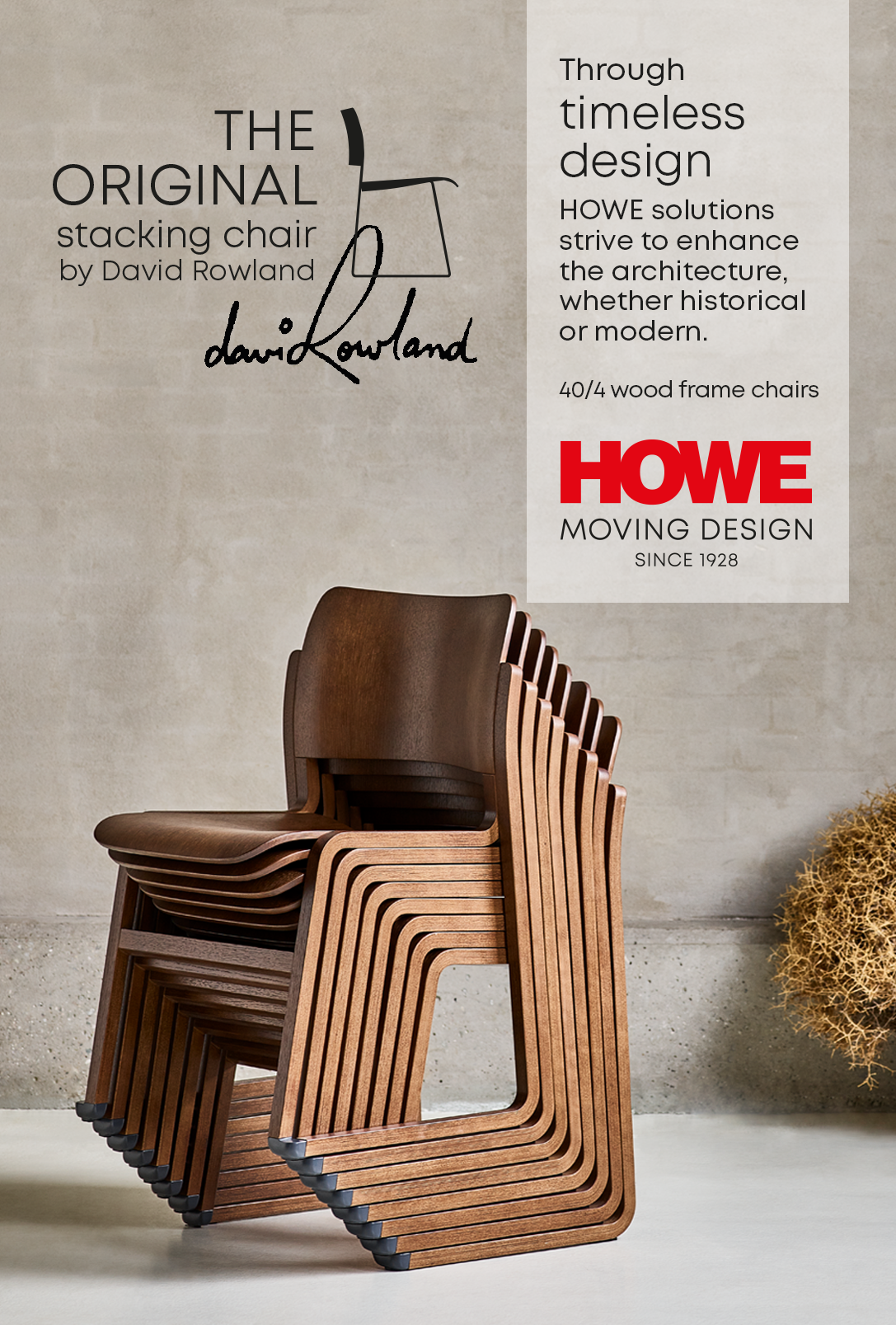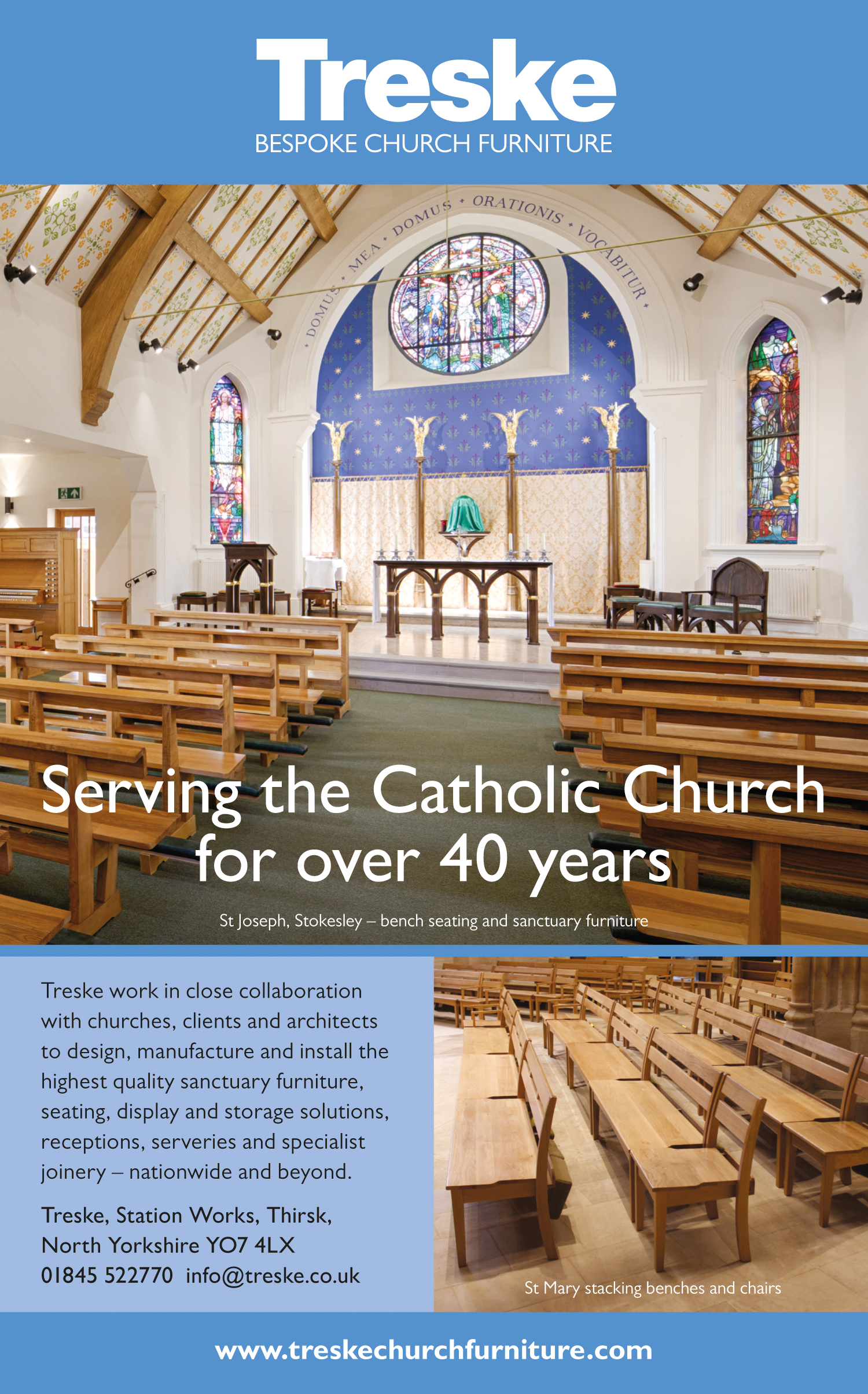The church of Our Lady of Lourdes, Thames Ditton, is located in the shadow of Hampton Court Palace in south west London. Since 2010 the parish has been considering how best to renovate side chapels to provide a more prayerful and fitting space for the Reserved Sacrament and for the Marian shrine. In 2012,
I was appointed to provide liturgical expertise and prepare proposals for consideration.
The lofty strong circular concrete building dates from 1962 and accommodates a congregation of approximately three hundred and fifty. The original design was confident,
of its time, and anticipated many of the liturgical and architectural changes precipitated by the Second Vatican Council. However, ‘time’ is now the twenty-first century and when detailed consideration of the proposals began, it quickly became apparent that for the parish to continue and grow its mission to a contemporary world the brief had to be expanded to include all of the interior. Consequently, it was decided to assess the suitability of the church building as a whole and to make changes to the interior that would facilitate twenty-first century worship.
An inclusive process of consultation ensued with close collaboration between me, Rev. Rob Esdaile the parish priest and the renovation committee and it was decided that the interior would be re-ordered with a new expanded entrance area to be created.
As liturgy is central to Roman Catholic worship, its visual and spatial requirements are always my starting point for any renovation. Whilst the interior is liturgically still advanced the existing worship space suffered from a number of drawbacks. The sanctuary furniture, altar, ambo and presider’s chair, were overwhelmed by a powerful circular interior,
in particular the altar. In Roman Catholic worship, the altar ‘is Christ’ and therefore must dominate the interior. The ambo, as the place of the Word, must symbolise the importance of the proclamation of the Word, in proper relationship to the altar, and here again the current arrangement was struggling.
These issues were exacerbated by the lack of a visual relationship between these elements which did little to reflect the structure of the mass as it progresses from the Liturgy of the Word to the Liturgy of the Eucharist.
The solution was to provide a new altar and ambo in Portland stone that clearly related to each other in material and form. The altar,
now in solid stone, is placed again at the centre of the circular interior but is now square in plan, with no front or back and of the same design on all four faces, emphasising the fact that the congregation gather around it together with the celebrant as equals. The light colour of the stone catches any natural light and as a result appears as a bright object at the focal point of the interior. The ambo is appropriately placed behind and to one side of the altar with a similar design theme so that its relationship is clear. The presider’s chair,
in timber, is located on the other side of the sanctuary, further back again to balance the ambo. The existing circular sanctuary was substantially retained with minor rationalisation of the steps to facilitate the distribution of communion and to provide the maximum amount of space for ritual.
The existing Blessed Sacrament Chapel has been completely refurbished to accommodate a new tabernacle. Previously this was recessed into the back wall with a freestanding altar in front. Now, the altar has been removed,
as there can be only one in a church, and a new freestanding tabernacle located in front of an existing dalle de verre window where it can now be directly viewed from the entrance of the worship space. >
The existing limestone baptismal font is retained in its original location just inside the entrance to the worship space to provide a sense of continuity and to honour previous generations who have been baptised in it.
Its location, at the entrance, is consistent with the symbolism of the sacrament of Baptism, i.e. the sacrament of entry into the Christian community. The baptismal space has been enhanced by inserting a striking new tiled floor around the font.
The straight pews were incongruous in a circular space of poor quality. The parish agreed to replace them with new curved pews that would integrate into the space and enhance a sense of focusing on the altar at the centre of the worship space.
The ritual of entering the church was reconsidered as the current entrance was really a lobby, cramped, visually busy and cluttered. In the Rite of Baptism, the physical entrance to a church building has a deep symbolic role and the parish wished to express this more explicitly. The parish wanted a larger entrance space that would facilitate a ministry of welcome, creating a more appropriate entrance to a place of worship that would accommodate the parts of the Rite of Baptism that can occur there. What was required was a space that would be welcoming and encourage a sense of community. The solution was to greatly enlarge the entrance by constructing a new extension that is remarkable by the incorporation of a large salvaged dalle de verre window that was donated by a neighbouring parish. The nine metre long by three metre high deeply-coloured glass panel floods the new entrance space with a rich and unique light that leaves one in no doubt that you are about to enter a house of God.
Work was completed in November 2016. The re-ordered interior and extended entrance space will allow Our Lady of Lourdes parish to continue to bear witness to Christian values in this part of London. The renovated church building builds on the traditions of the parish whilst providing a new dynamic worship space that will bear witness to the worship and values of the current generation, and pass on those values to future generations.






